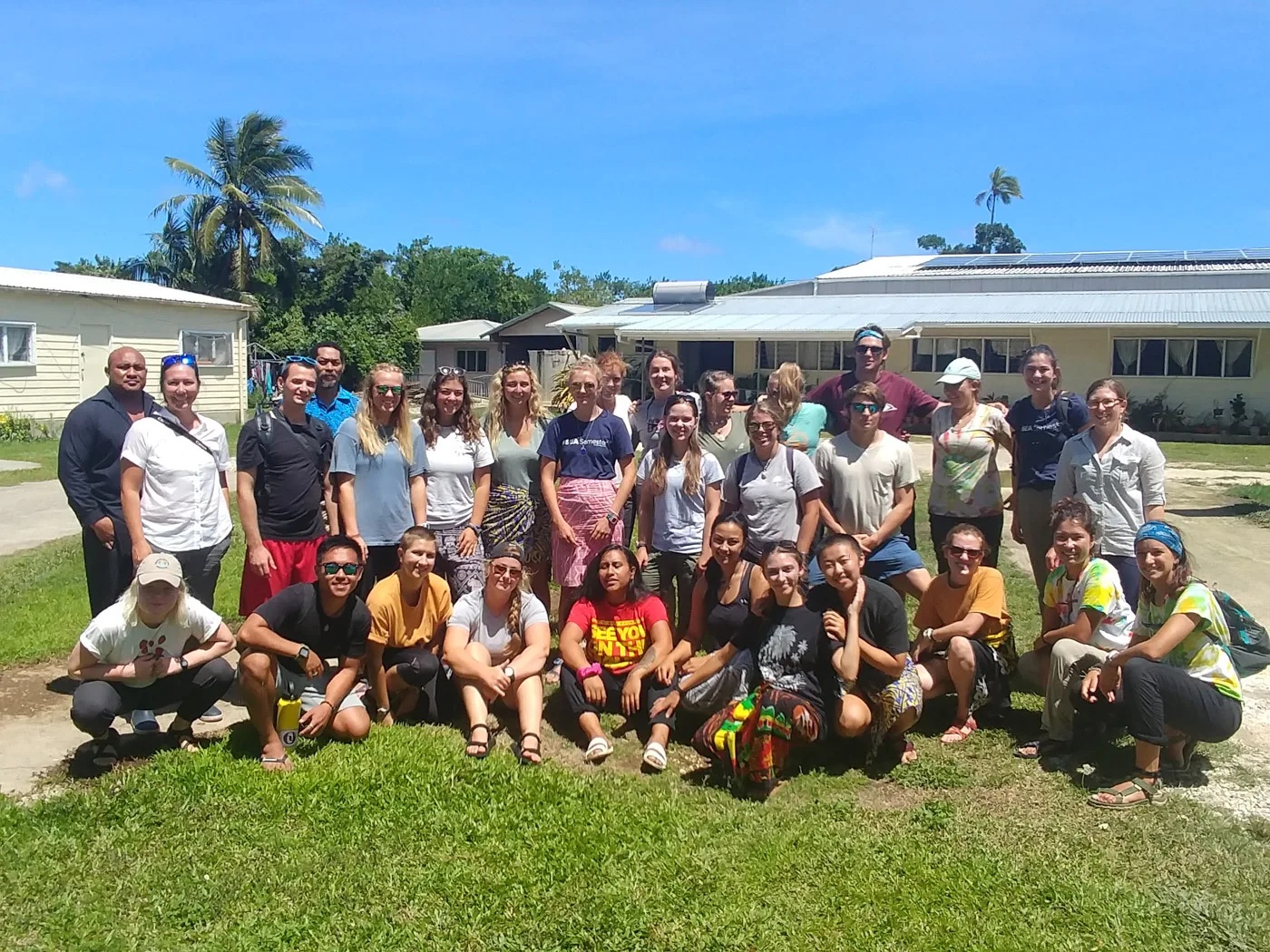Programs Blog
Roots in Earth and Water

Ship’s Log
Current Position
Nuku’alofa
Ship’s Heading and Speed
Docked!
Weather
Sunny with a variety of cloud types!
Emerging from the doghouse, I was greeted by a cool morning breeze that brushed from the port side of the deck. Having just completed the 0600 boat check, I found that the sunrise had begun while I was below deck. Moving to the rail, I fell into conversation with my 0500-0630 dock watch buddy Zuri, when I noticed a spot of white foam in the distance. Then, a whale breeched, far enough away that it wouldn’t be noticed with a pacing glance. Soon, another joined it, breeching multiple times before a beautiful sunrise.
“They’re greeting the sun,” Zuri said. I couldn’t agree more.
Our brief but busy port stop in Nuku’alofa has been full of moments like these. Yesterday, our group visited Tonga’s blow holes (where water shoots many feet out of coastal rocks into the air!) as well as seeing Tonga’s fishing pigs (pigs that fish for their food!). Today, however, was special in that we got to learn about Tonga’s mangroves.

The morning began with a trip to Tonga’s Department of the Environment, where we learned about their various programs and strategies to reduce waste and protect the environment in Tonga. They then treated us to a visit to one of the mangrove nurseries with mangrove expert Hoifua Aholahi.
Piling out of the bus, I was surprised to find that the nursery was located in a residential area. Nestled within a fenced-in enclosure, the four-year-old mangroves grew clustered together. Hoifua informed us that these mangroves would remain here, joining the other mangroves that already grew along the shore of the blue-green lagoon. He then showed us the seeds of the mangrove, which are long stalks, and told us that they are planted by being dropped vertically into the ground, growing into happy young mangroves and maturing at around five years. Mangrove ecosystems are important because they serve as nurseries for open ocean fish species, something which Hoifua stressed. We finished the trip by traveling inland to plant a few coastal trees at a home established by the Prince for the elderly and disabled. It felt good that we were able to give back to thecommunity and the environment in this way.
At the end of the day, we had the wonderful opportunity to have dinner with some of the members of the Department of the Environment and Department of Geology. I enjoyed the conversations I had with them and learned so much. I am grateful for all that they showed and taught us today and want to take a moment to thank them for all they have done for us today.
As much as I have enjoyed my time in Nuku’alofa and Tonga, I am missing being on the open ocean much more than a thought I would. I am impatient for tomorrow when we set sail again. Landless horizons, windy days, and getting soaked by random large waves at inopportune times here I come!
– Katherine H. Webber, B Watch, Best Watch!, The University of Virginia
Recent Posts from the Ships
- Ocean Classroom 2024-A collaborative high school program with Proctor Academy
- Collaborations and Long-term Commitments: SEA’s Caribbean Reef Program Sets a Course for Coastal Programs that Compliment Shipboard Experiences.
- Sea Education Association students prepare for life underway using state of the art nautical simulation from Wartsila Corporation.
- SEA Writer 2022, Magazines From the Summer SEA Quest Students
- Technology@SEA: Upgrades Allow Insight into Ocean Depths
Programs
- Gap Year
- Ocean Exploration
- High School
- Science at SEA
- SEA Expedition
- SEAScape
- Pre-College
- Proctor Ocean Classroom
- Protecting the Phoenix Islands
- SPICE
- Stanford@SEA
- Undergraduate
- Climate and Society
- Climate Change and Coastal Resilience
- Coral Reef Conservation
- Marine Biodiversity and Conservation
- MBL
- Ocean Exploration: Plastics
- Ocean Policy: Marine Protected Areas
- Oceans and Climate
- Pacific Reef Expedition
- The Global Ocean: Hawai'i
- The Global Ocean: New Zealand